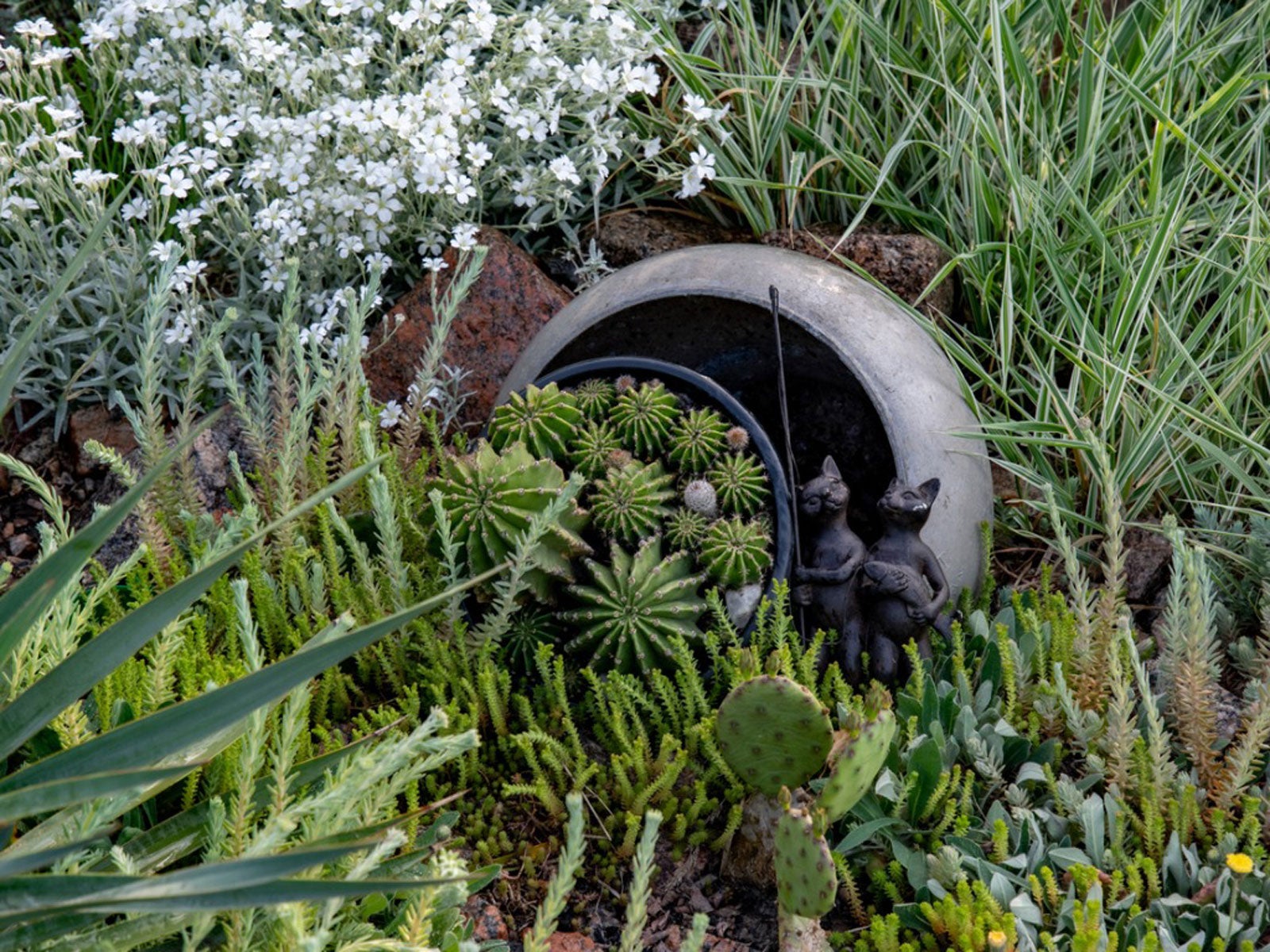Succulent Companions: Best Companion Plants For A Succulent Garden


Growing succulent plants in the landscape helps fill areas that might not be favorable to the growth of high maintenance ornamentals. Sunny spots with poor soil aren’t a problem for growing succulents as they are for many other plants. There are also several low-maintenance ornamentals that flourish in these conditions. Find them to use as companions with succulents.
Planting Companions with Succulents
Companion planting is often used to add height above ground hugging succulent plants. Drought tolerant flowering plants such as the osteospermum are good candidates. The flowers on this daisy may stand upright or trail alongside your succulents, as do blooms of the perennial Santa Barbara daisy. Allow them to trail among taller succulents like aloe and agave.
Ornamental grasses, often with autumn blooms and interest through winter, are appropriate companion plants for succulents. Numerous varieties exist that have similar maintenance requirements as many succulent plants. Ornamental grasses may be grown to provide afternoon shade if they’re properly located.
While many succulents prefer all day sunshine, afternoon shade can sometimes keep leaves from getting sunburned. Check your succulent type info to learn if they benefit from shade providing ornamentals. Blue fescue grass is shorter but might provide an attractive companion to your succulents.
Yarrow, lavender, salvia, and rosemary are great flowering herbs to grow alongside your succulent beds. These herbs take the same conditions as most ground planted succulents. Depending on your layout, plant these herbs at the back of the bed or surround it with them. If the bed is open on all sides, grow them in the middle.
Other Succulent Companions
Sometimes shrubs or large bushy plants are appropriate to include when planting with succulents. Those that are drought tolerant and need the same or a little more sunshine than the succulent plants include blue mist spirea. This shrub needs well-draining soil, as do the succulents. Soil does not have to be rich or fertile. Watering is also rarely required.
Some types of Euphorbias also grow in these conditions as a small shrub or tree, complementing succulents planted nearby. Rockrose is a bigger shrub that grows well in these conditions. Grow these in soil that is a sandy loam.
Sign up for the Gardening Know How newsletter today and receive a free copy of our e-book "How to Grow Delicious Tomatoes".
Any well-draining soil helps prevent root rot of the succulents and other plants. If you want to plant in an area where soil is clay, this should be amended with compost, pebbles, or sand. The goal is to prevent winter or spring rains from sitting around the root system. A thick layer of grit/gravel/pumice is also appropriate in this soil.

Becca Badgett was a regular contributor to Gardening Know How for ten years. Co-author of the book How to Grow an EMERGENCY Garden, Becca specializes in succulent and cactus gardening.